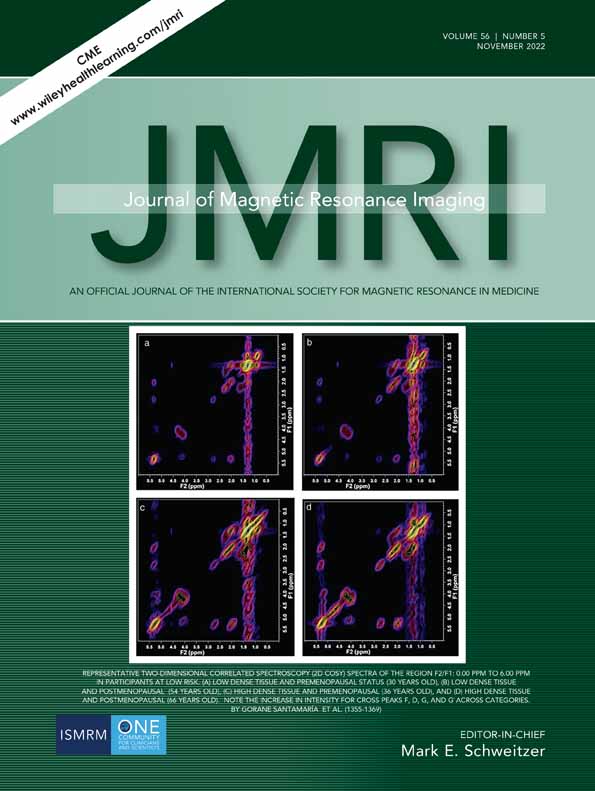Optimization of Detection of Gadodiamide Brain Retention in Rats Using Quantitative T2 Mapping and Intraperitoneal Administration
This article reflects the views of the authors and should not be construed to represent US FDA's views or policies.
Abstract
Background
Currently, the gadolinium retention in the brain after the use of contrast agents is studied by T1-weighted magnetic resonance imaging (MRI) (T1w) and T1 mapping. The former does not provide easily quantifiable data and the latter requires prolonged scanning and is sensitive to motion. T2 mapping may provide an alternative approach. Animal studies of gadolinium retention are complicated by repeated intravenous (IV) dosing, whereas intraperitoneal (IP) injections might be sufficient.
Hypothesis
T2 mapping will detect the changes in the rat brain due to gadolinium retention, and IP administration is equivalent to IV for long-term studies.
Study Type
Prospective longitudinal.
Animal Model
A total of 31 Sprague–Dawley rats administered gadodiamide IV (N = 8) or IP (N = 8), or saline IV (N = 6) or IP (N = 9) 4 days per week for 5 weeks.
Field strength/sequences
A 7 T, T1w, and T2 mapping.
Assessment
T2 relaxation and image intensities in the deep cerebellar nuclei were measured pre-treatment and weekly for 5 weeks. Then brains were assessed for neuropathology (N = 4) or gadolinium content using inductively coupled plasma mass spectrometry (ICP-MS, N = 12).
Statistical tests
Repeated measures analysis of variance with post hoc Student–Newman–Keuls tests and Hedges' effect size.
Results
Gadolinium was detected by both approaches; however, T2 mapping was more sensitive (effect size 2.32 for T2 vs. 0.95 for T1w), and earlier detection (week 3 for T2 vs. week 4 for T1w). ICP-MS confirmed the presence of gadolinium (3.076 ± 0.909 nmol/g in the IV group and 3.948 ± 0.806 nmol/g in the IP group). There was no significant difference between IP and IV groups (ICP-MS, P = 0.109; MRI, P = 0.696). No histopathological abnormalities were detected in any studied animal.
Conclusion
T2 relaxometry detects gadolinium retention in the rat brain after multiple doses of gadodiamide irrespective of the route of administration.
Evidence Level
1
Technical Efficacy
Stage 1




